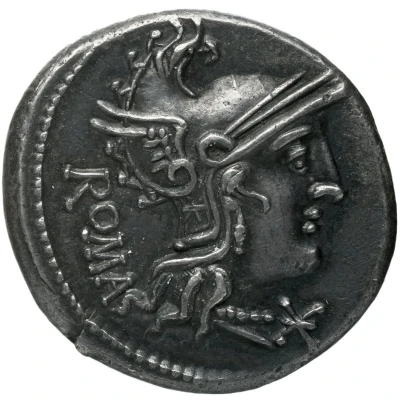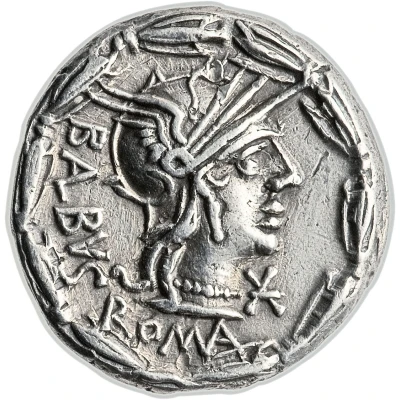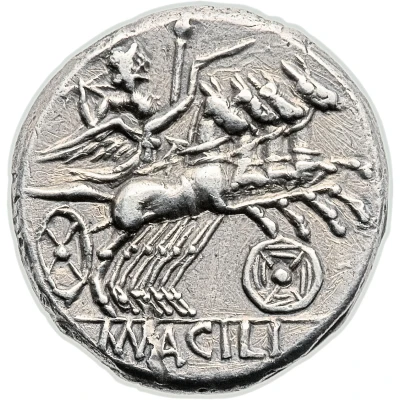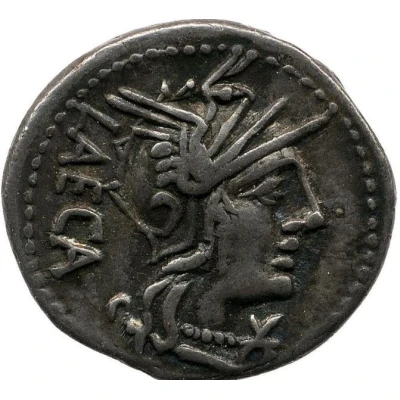
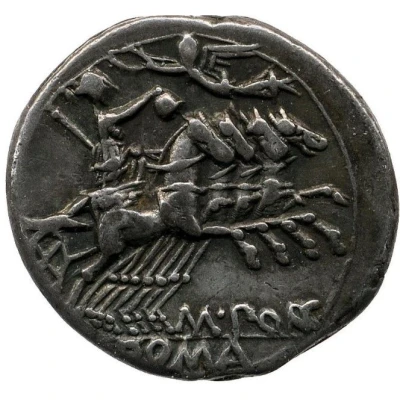

© British Museum
Denarius Porcia: Marcus Porcius Laeca; LAECA / M•PORC ROMA 125 BC
125 BC year| Silver (.950) | 3.82 g | 19 mm |
| Issuer | Rome › Roman Republic (509 BC - 27 BC) |
|---|---|
| Period | Republic (509 BC - 27 BC) |
| Type | Standard circulation coin |
| Year | 125 BC |
| Value | Denarius (1) |
| Currency | Denarius of 16 Asses (141 – 27 BC) |
| Composition | Silver (.950) |
| Weight | 3.82 g |
| Diameter | 19 mm |
| Shape | Round (irregular) |
| Technique | Hammered |
| Demonetized | Yes |
| Updated | 2024-10-06 |
| Numista | N#47226 |
|---|---|
| Rarity index | 84% |
Reverse
Libertas in quadriga galloping right, holding reins and rod (vindicta) in left hand and pileus in right hand, being crowned by Victory flying left.
Part of moneyer mark in field under horses.
ROMA in exergue.
Script: Latin
Lettering:
M•PORC
ROMA
Translation: Marcus Porcius
Comment
The gens Porcia was a plebeian moneyer.Interesting fact
The Denarius coin features an image of Marcus Porcius Laeca, a Roman politician and military leader, on one side, and the abbreviation "LAECA" and the name "M•PORC ROMA" on the other. This coin was minted during Laeca's consulship in 125 BC, and its design was meant to promote his political and military achievements. It's interesting to note that the coin's design was influenced by Greek art and architecture, which was a common trend in Roman coinage during this period. The use of Greek imagery and symbols on Roman coins was a way for Roman leaders to showcase their connection to Greek culture and to emphasize the shared cultural heritage of the two civilizations. Overall, this coin is a fascinating example of how art, politics, and culture came together in ancient Rome, and how coins were used as a means of communication and propaganda.
